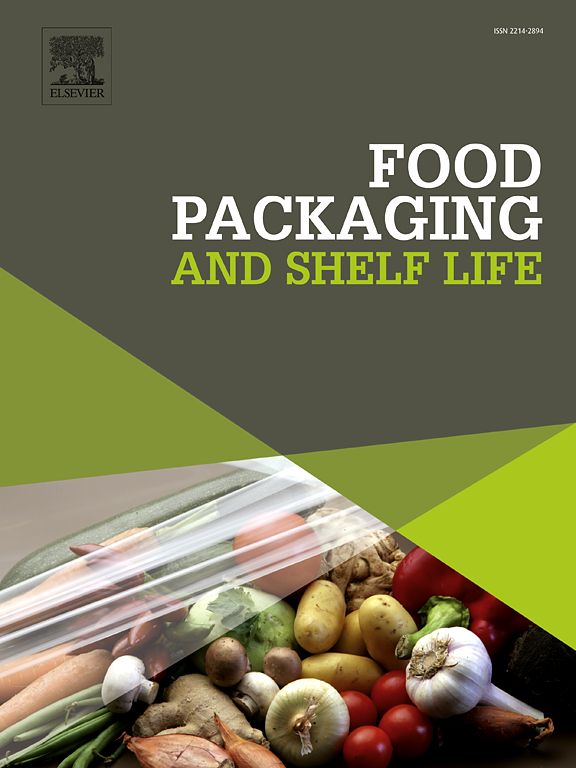Antimicrobial activity and preservation efficiency of TEMPO-oxidized chitin/5-aminolevulinic acid films mediated by photodynamic inactivation against salmon fillets
IF 10.6
1区 农林科学
Q1 FOOD SCIENCE & TECHNOLOGY
引用次数: 0
Abstract
A novel photodynamic inactivation (PDI)-mediated antimicrobial packaging film (APF) was successfully fabricated by covalently grafting 5-aminolevulinic acid (ALA) onto the surface of TEMPO-oxidized chitin film (O-CT). The O-CT/ALA films exhibited good mechanical strength, remarkable UV-blocking capacity, high thermal stability, and chemical stability. Notably, the grafted ALA induced the generation of endogenous protoporphyrin IX in bacterial cells, and they were excited to produce ROS under the irradiation of blue light. Consequently, the films inactivated > 7.00 log CFU/mL of Vibrio parahaemolyticus and 3.29 log CFU/mL of Staphylococcus aureus, as well as efficiently eradicated the bacterial biofilms by disrupting their architectural structures. More importantly, the films inhibited the growth of native bacteria in salmon during storage at 4 °C and 25 °C. Therefore, the PDI-mediated APF is valid in inactivating bacteria and ensuring food quality in the food industry.
光动力失活介导的tempo氧化几丁质/5-氨基乙酰丙酸膜对鲑鱼鱼片的抑菌活性及保鲜效果
通过将5-氨基乙酰丙酸(ALA)共价接枝到氧化甲壳素膜(O-CT)表面,成功制备了一种新型光动力失活(PDI)介导的抗菌包装膜(APF)。O-CT/ALA薄膜具有良好的机械强度、显著的紫外线阻隔能力、较高的热稳定性和化学稳定性。值得注意的是,嫁接的ALA诱导细菌细胞产生内源性原卟啉IX,并在蓝光照射下被激发产生ROS。因此,该膜对副溶血性弧菌和金黄色葡萄球菌的灭活能力分别为>; 7.00 log CFU/mL和3.29 log CFU/mL,并通过破坏细菌生物膜的建筑结构有效地根除细菌生物膜。更重要的是,在4°C和25°C的储存过程中,薄膜抑制了鲑鱼体内天然细菌的生长。因此,在食品工业中,pdi介导的APF在灭活细菌和保证食品质量方面是有效的。
本文章由计算机程序翻译,如有差异,请以英文原文为准。
求助全文
约1分钟内获得全文
求助全文
来源期刊

Food Packaging and Shelf Life
Agricultural and Biological Sciences-Food Science
CiteScore
14.00
自引率
8.80%
发文量
214
审稿时长
70 days
期刊介绍:
Food packaging is crucial for preserving food integrity throughout the distribution chain. It safeguards against contamination by physical, chemical, and biological agents, ensuring the safety and quality of processed foods. The evolution of novel food packaging, including modified atmosphere and active packaging, has extended shelf life, enhancing convenience for consumers. Shelf life, the duration a perishable item remains suitable for sale, use, or consumption, is intricately linked with food packaging, emphasizing its role in maintaining product quality and safety.
 求助内容:
求助内容: 应助结果提醒方式:
应助结果提醒方式:


